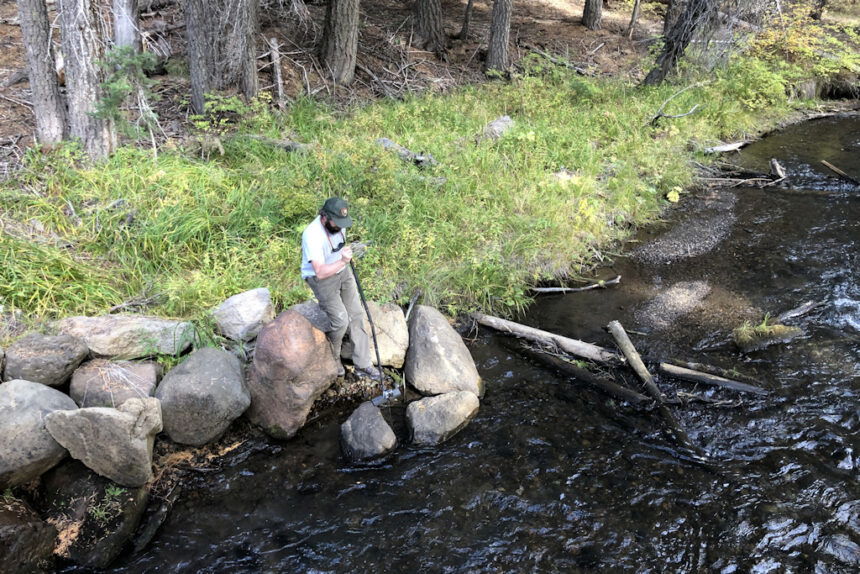Bull trout discovery in Klamath County creek a restoration milestone

KLAMATH FALLS, Ore. (KTVZ) -- For the first time in over a century, bull trout were found in a reconnected creek channel crossing the Sun Pass State Forest in Klamath County – a significant milestone in restoring and improving habitat for the threatened fish species.
More than 100 years ago, Sun Creek in Klamath County was diverted for agriculture irrigation, breaking the natural link between its headwaters in the Crater Lake National Park and the Wood River. This disconnected the creek headwaters from other tributaries, hampering migratory fish species like the bull trout, which are listed as threatened under the federal Endangered Species Act.
Crater Lake National Park has taken the lead for decades in protecting and enhancing bull trout populations in the park.
In the 1980s, biologists from the park found a native population of bull trout that was struggling from competition with non-native trout and disconnection from its historic habitat due to the Sun Creek diversion.
Mitigation measures like removing non-native fish reduced competition and helped build populations, but reconnecting Sun Creek to the Wood River provided a chance to make a major, positive impact in a variety of ways.
“We really wanted to focus on this population, to try to expand its size, range and perhaps in the future mix with some of (the other nearby) bull trout populations, to increase the genetic diversity,” said Nell Scott, Klamath Restoration Director for Trout Unlimited.
But this was an ambitious idea: Rebuilding two miles of stream to reoccupy Sun Creek’s natural channel and connect it to the river.
The reconnected portion runs through the Sun Pass State Forest and private ranchland, and part of the complex project included creating a natural environment, through tasks like placing woody debris, planting a native riparian area and extensive monitoring.
With the channel reconnected in 2017, the next step was watching – and waiting.
“The idea behind habitat restoration projects like this is that if we can build the habitat template that fish need to migrate and make it available to them, then that migratory life history might be restored,” said Crater Lake Fisheries Biologist Dave Hering.
This summer, NPS staff found the first bull trout in this reconnected portion. While not an ending point, Hering said this discovery nevertheless indicates that at least some bull trout are finding their way into their traditional habitat.
“That was super-exciting to see,” Hering said. “We don’t know yet what that means or what they’ll do, where they’ll go, whether they’ll stay here, whether we’ll get more bull trout here or if they’ll migrate downstream and then come back later to spawn. All of that remains to be seen. But so far, it seems like a good success that we’ve gotten fish at least this far.”
Besides being a landowner on the reconnected creek portion, ODF’s role includes stream habitat enhancement like placing woody debris in streams to slow the current and create places for fish to hide. This also adds and retains nutrients in the stream to support algae and invertebrate growth. This work can build upon itself as more wood floats downstream and is caught in the creek, creating more quality fish habitat.
As a project spanning 25 years, this bull trout habitat restoration project required patience as well as extensive partner collaboration. But for ODF Klamath-Lake Management Unit Forester John Pellissier, it’s a major positive indicator of what’s possible.
“It really is a testament to putting something together across different ownerships, a number of partners, the manpower end of it – just putting all of this together was a huge undertaking by a number of people,” Pellissier said. “Then to see the success and actually come end-to-end, and put a channel where everyone’s been talking about it, see the water flow and fish start using it, has been a real positive piece to this story.”
In addition to the National Park Service, ODF and Trout Unlimited, major partners and funders include U.S. Fish and Wildlife , the Oregon Watershed Enhancement Board, Klamath Tribes, U.S. Forest Service, Western Native Trout Initiative, National Fish and Wildlife Foundation, Natural Resources Conservation Service and private landowners.